Tap Dancing in a Minefield: Your Guide to Amazon Restricted Categories
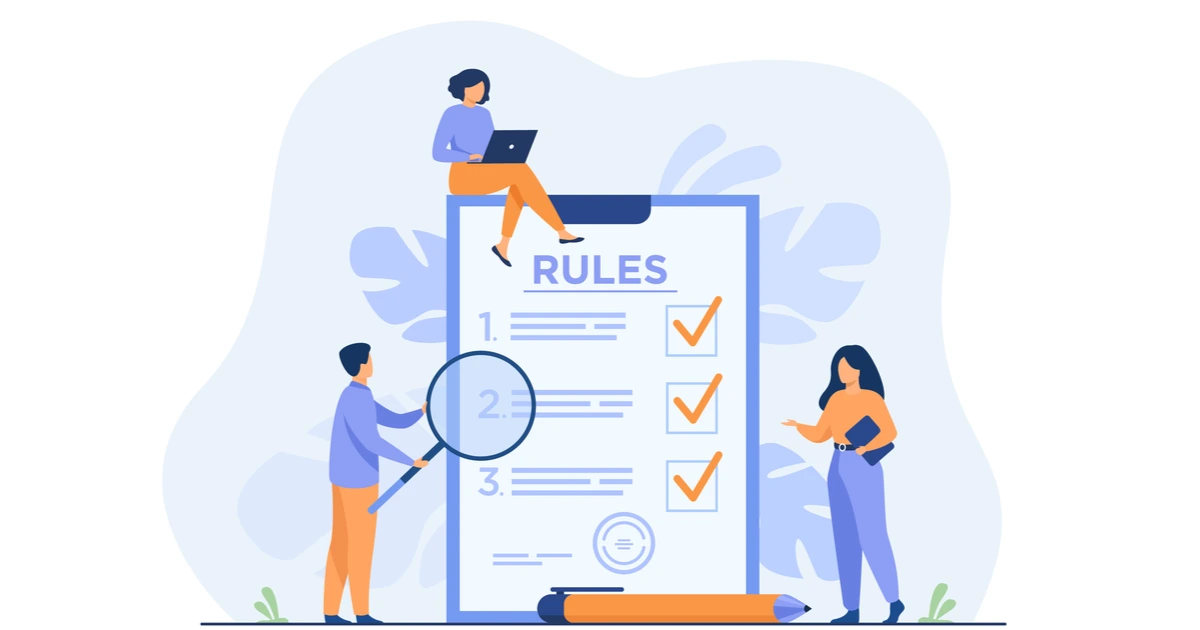

Selling on Amazon is supposed to be easy… and judging by our community’s success and enthusiasm, it is (for the most part). However, any marketplace (physical or digital) is only as credible as the rules put in place to protect its customers. As such, Amazon sellers are responsible for playing by said rules.
While we would normally take this time to discuss how easy product and keyword research is with the right tools, or perhaps some shortcuts to bring traffic to your Amazon listing, today we’re discussing that scary locked door in the corner of the room:
Amazon restricted (also known as “gated”) categories and products.
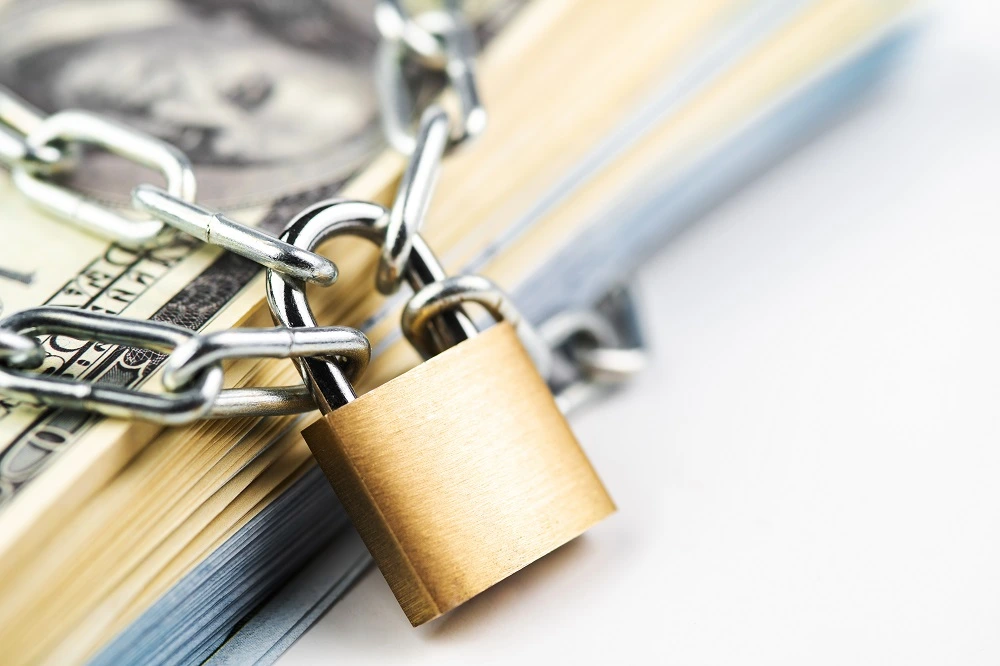
Why Does Amazon Restrict a Specific Product in the First Place?
Yes, Amazon wants to make it easy for aspiring entrepreneurs to get their businesses off the ground. However, their number one priority remains to make the Amazon marketplace a safe and credible shopping experience for customers.
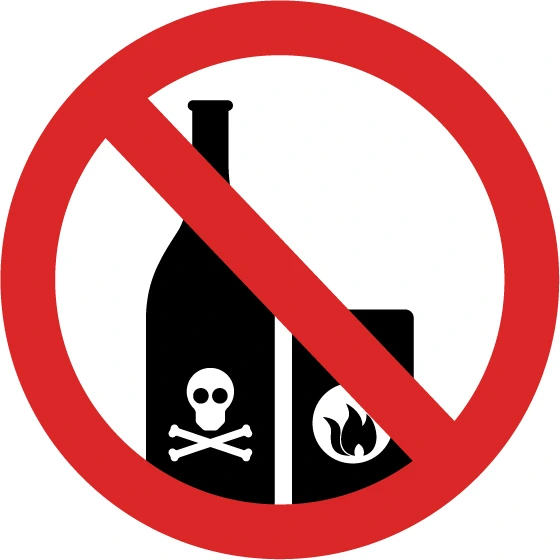
What About Amazon Restricted Products?
The following products are classified as “restricted” by Amazon:
- Alcohol
- Animals & Animal-Related Products
- Art – Fine Art
- Art – Home Decor
- Automotive and Powersports
- Composite Wood Products
- Cosmetics & Skin/Hair Care
- CPAP Cleaning and Disinfecting Devices
- Currency, Coins, Cash Equivalents, and Gift Cards
- Dietary Supplements
- Drugs & drug paraphernalia
- Electronics
- Explosives, Weapons, and Related Items
- Export Controls
- Food & Beverage
- Gambling & Lottery
- Hazardous and Dangerous Items
- Human Parts & Burial Artifacts
- Jewelry & Precious Gems
- Laser products
- Lighting
- Lock Picking & Theft Devices
- Medical devices and accessories
- Offensive and Controversial Materials
- Other Restricted Products
- Pesticides and Pesticide Devices
- Plant and Seed Products
- Postage meters and stamps
- Recalled Products
- Recycling electronics
- Refrigerants: Ozone-Depleting Substances and Substitutes
- Subscriptions and Periodicals
- Surveillance Equipment
- Tobacco & Tobacco-Related Products
- Warranties, Service Plans, Contracts, and Guarantees
- Upholstered Furniture, Bedding, & Other Quilted Products
Each of these products has specific limitations that you must adhere to if you wish to sell your product without bringing the Amazon hammer down on your business. Some are more obvious than others. For example, there is a restricted category of products listed as “lock picking and theft devices.” All items under this Amazon product category are prohibited, except blank keys, which many wouldn’t expect to find in such a sinister-sounding category.
As another example of Amazon-restricted categories, “Dietary Supplements” contain a detailed compliance checklist along with a specific list of “known prohibited products.”
I strongly recommend getting acquainted with the do’s and don’ts of Amazon policy restrictions, no matter what your product is. When it comes to seller account suspensions (and potential bans), the best plan of action is always the proactive one.
Don’t let your brand fall victim to the fine print, like so many others.

Specific Product Safety Concerns that Commonly Surface on Amazon
If you sell one of the following products, you may be required to submit extra documentation to prove their safety.
- Amazon Device Accessories
- Amber teething jewelry
- Bassinets and Cradles
- Selling mountaineering carabiners in the US
- Amazon’s Policy on Selling Child Restraint Systems in the United States
- Amazon’s Policy on Selling Infant Walkers in the United States
- Children’s Jewelry
- Children’s Products
- Children’s School Supplies
- Drawstrings in children’s clothing
- Eclipse glasses and filters for solar viewing
- Fidget spinners
- Fire & Smoke Masks
- Fire and other safety products
- Infant-inclined sleep products
- Infant sleep positioners
- Invisible Ink Pens
- Magnetic putty
- Magnetic building tiles
- Mobile Phone / Laptop Computer Batteries and Chargers
- Paint Removal Products
- Personal Electronic Mobility (E-Mobility) Devices
- Selling personal flotation devices (PFDs) in the US
- Power Banks
- Portable Automotive Jump Starters
- Selling portable generators, portable inverter generators, and related devices in the US
- Selling Toys in the US
- Squishy Toys
- Seasonal and Decorative Lighting Products
- Product Assurance – Selling Children’s Toys in the US
- Amazon’s Policy on Selling Infant Bedside Sleepers in the United States
- Amazon’s Policy on Selling Children’s Sleepwear in the United States
- Selling Full-size Cribs and Non-Full-size Cribs in the United States
On Amazon’s “Recalls & Product Safety” page, you can view details for each of these products, including things like:
- Product description and examples
- Step-by-step instructions for how to request approval to sell the product
- Specific Amazon testing requirements sellers must meet
- Applicable links to safety commissions and other regulatory information
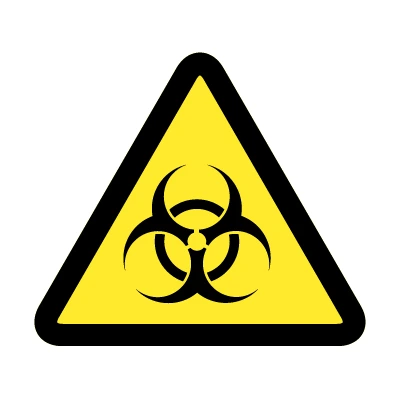
Are There Any Products That You Cannot Sell Through Amazon FBA, Outright?
You bet. The following are Amazon FBA– prohibited products:
- Alcoholic beverages (including non-alcoholic beer)
- Vehicle tires
- Gift cards, gift certificates, and other stored-value instruments
- Products with unauthorized marketing materials, such as pamphlets, price tags, or other non-Amazon stickers (Amazon does not accept pre-priced labels)
- Products that require preparation but that have not been prepared according to FBA packaging and prep requirements
- Loose packaged batteries
- Damaged or defective units (“Used condition” products may have damage as long as the product is labeled with the appropriate condition)
- Products with labels that were not properly registered with Amazon before shipment or that do not match the product that was registered
- Products that do not comply with any agreement between Amazon and the seller
- Products that have been illegally replicated, reproduced, or manufactured
- Products that Amazon otherwise determines are unsuitable
Note: Amazon reserves the right to dispose of any hazardous or illegal products without reimbursement.
Other Specialty Product Policies to be Aware of
- If your product claims to be “FDA Approved,” “FDA Cleared,” or contains any FDA logo, you will need to meet additional requirements.
- Amazon’s Dangerous Goods Identification Guide is a great resource to have if you need to determine whether or not your product is identified as “hazardous” or if you need to look up the appropriate hazardous transport label.
- If you plan on selling products on international listings, you are responsible for ensuring that your product and listing comply with the relevant laws and regulations.
- Certain products may be subject to additional California regulations.
- We advise all FBA sellers to familiarize themselves with Amazon’s FBA restrictions policy.
How to Sell a Gated Product on Amazon – Seller Central
Just because your product falls under an Amazon gated category does not mean it’s time to abandon ship and start from scratch. If you are trying to list your product and you come across a “listing limitations apply” notification, try the following in Seller Central:
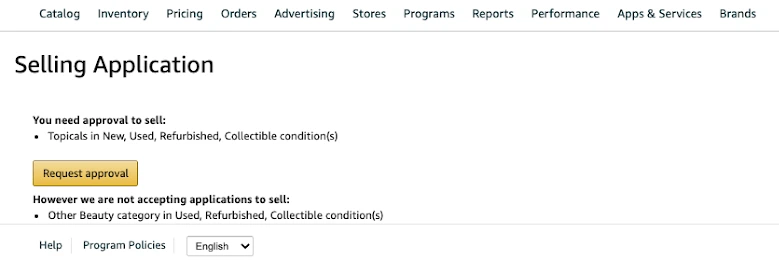
- Within your Inventory menu, click “Add a Product”
- Search for the product you wish to sell
- Next to that item, click on the link for the “Listing limitation apply” badge
- To begin the approval process, click “Request Approval”
To discover in-depth methods to succeed with this tool, check out our helpful Amazon Seller Central guide and get a leg up over the competition!
How to Increase Your Chances of Getting Approved by Amazon
While it may seem like you are at Amazon’s mercy for permission to sell within gated categories (you mostly are), there are a few things you can do to increase your chances of success before applying for approval.
- Start researching if the Amazon Professional Seller Plan is viable for you. This account is $40 per month but as we mentioned earlier, required to sell in certain Amazon-gated categories.
- Keep your receipts! There is a solid chance that Amazon will want to see a supplier invoice (dated within 90 days prior to your application) to prove your product’s authenticity. Always keep records of your invoices with up-to-date supplier info (including your manufacturer address and website). In fact, we recently wrote an article specifically about product invoice verification!
- Build Your Best Listing. If your product listings don’t comply with Amazon’s guidelines or are hastily constructed, they won’t shed the best light on your brand’s legitimacy. Do you have engaging bullet points and a stellar product description? Do your listing images grab shoppers’ attention and fall in line with Amazon’s product image requirements?
- Amazon street cred is real… earn it. The entire reason certain categories and products are restricted in the first place is to build credibility with shoppers. Because of this, Amazon likes to see sellers who provide a trustworthy shopping experience. Keep an eye on key performance indicators such as order defect rate (should be less than 1%), pre-fulfillment cancellation rate (should be less than 2.5%), and last shipment rate (should be less than 4%).
Bonus Tip: Defend Your Listings from Malicious Hijackers
While most of us play by Amazon’s rules, there will always be a select few looking to cheat the system and play dirty. Fortunately, when we were creating our Amazon seller app, we thought of that. With Alerts from Helium 10, you now have an Amazon product monitoring tool to keep an eye on your listing 24/7. Think of it as a digital security camera that automatically detects the most common Amazon listing attacks employed by black hat sellers – yes, including someone trying to change your listing to a restricted category in an effort to suspend you.
Alerts continuously monitor your Amazon listings and actively push notifications to you if someone is attempting to alter your listings. This includes changes in price, title changes, Buy Box changes, and Amazon category changes. With daily listing snapshots and the ability to monitor up to 1,000 ASINs all from one place, never again fall victim to malicious hijackers.
Don’t Try to Tap Dance in a Minefield
As you can see, there is a little more to restricted categories on Amazon than what meets the eye. Before you pour money into a winning product idea, take a spin through the policies and regulations listed above. At worst, you took some time out of your day for peace of mind. At best, you saved yourself thousands of dollars in wasted inventory, suspended listings, and the risk of a banned account.
If you have experience selling products in Amazon gated categories, head over to the Helium 10 Member’s Facebook Group and share your experience! Whether you are a new seller or an Amazon expert, we’re in this together.
Frequently Asked Questions
What is a gated category?
Gated categories, are just another name for restricted categories on Amazon. Some categories and items are restricted on Amazon to maintain a safe and trustworthy shopping experience.
How do you check if a product is gated?
To check if a product is gated/restricted on Amazon, try adding a product in Amazon Seller Central. If it is gated, click the ‘Show Limitations’ link next to the product. Next, click ‘Listing Limitations Apply’ and then ‘Request Approval’ if you want to move forward with selling the product.








